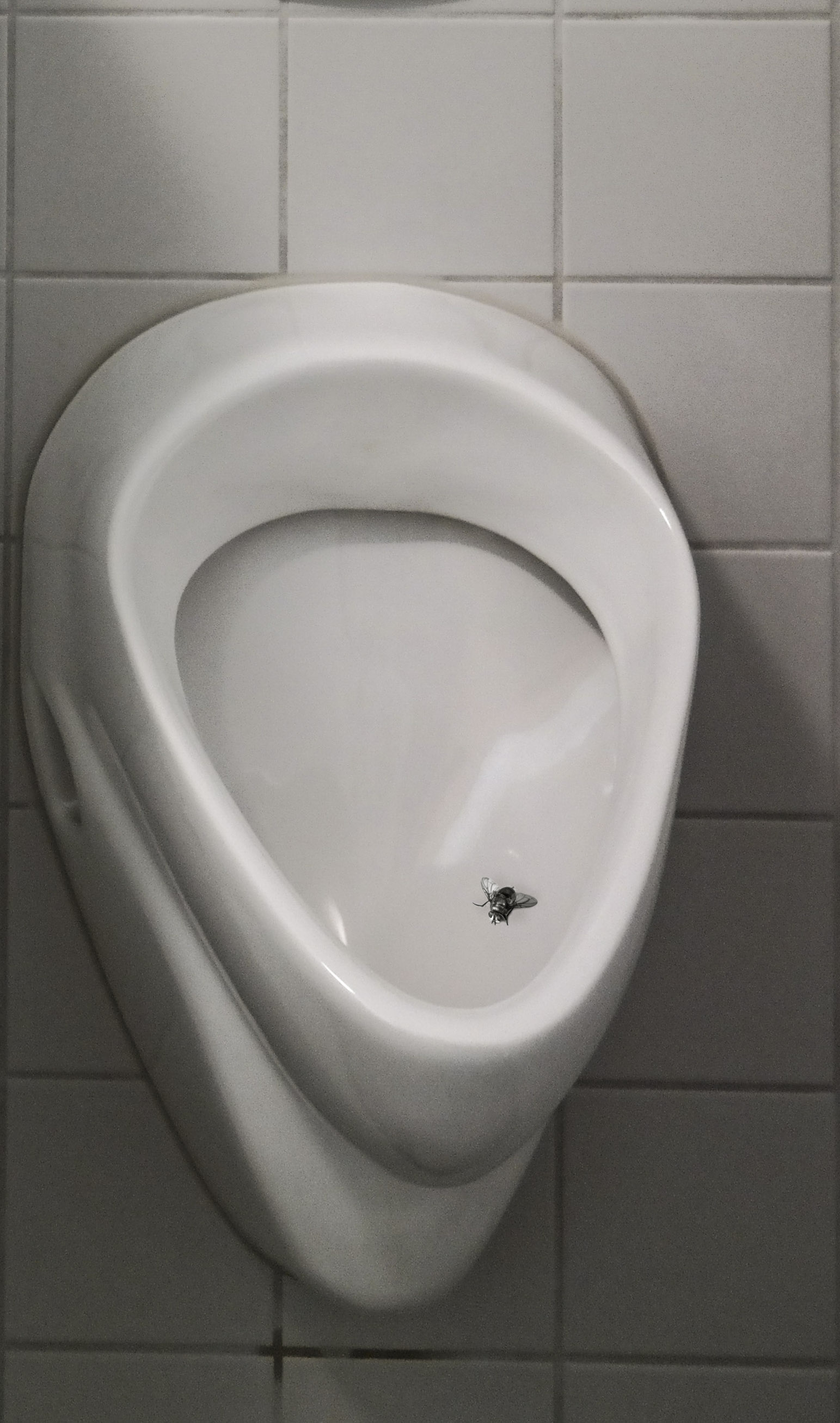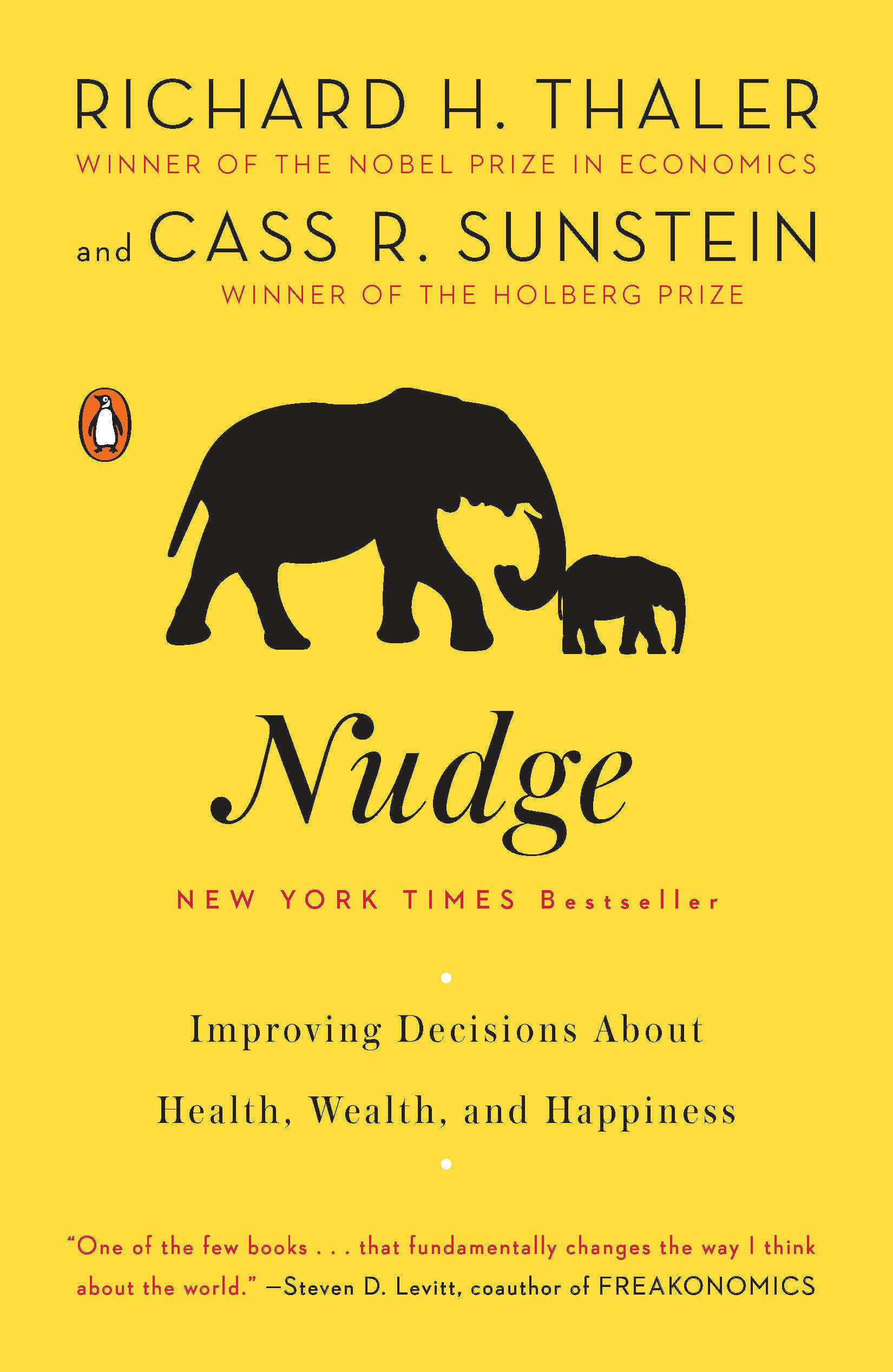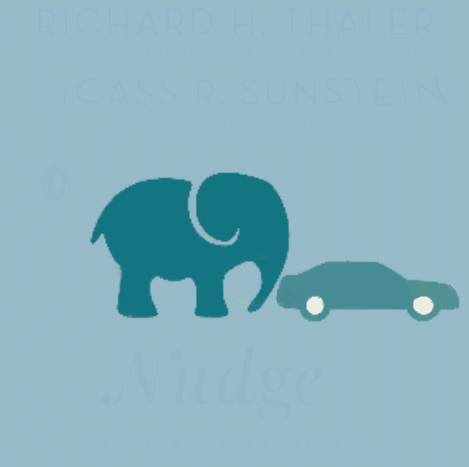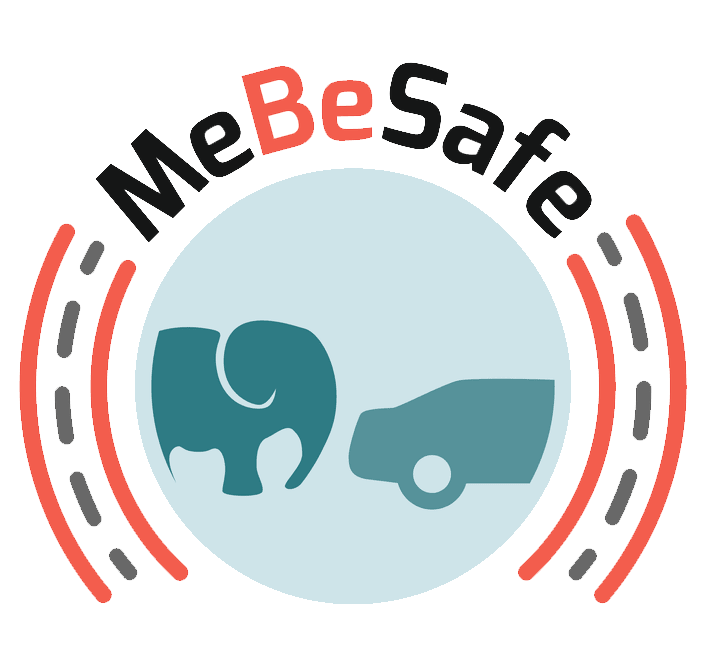What is nudging?
And what have elephants got to do with traffic?
You can try to change people’s behaviour in a number of ways. You could theoretically outlaw all possibilities but one, and that is a forcing measure. You can inform people about the effect of their choices, and that’s an informational measure. But you can also give people a small push towards a certain direction, and that is called nudging.
Nudging is nothing more than a gentle push towards a good direction. All options are still open, so the person who is nudged can make any decision they want. The ‘less-good’ options cannot be inflicted with any kind of extra fee or extra effort. The nudge is simply a small change in the surroundings that makes it more likely for the desired option to be chosen. An alteration of the choice architecture.
"A nudge is a small change in the surroundings that make it more likely for a desired option to be chosen"

A person who is being nudged is often not aware of it. True type 1-nudges appeal to the subconscious type 1 system of decision-making, which is governed by a large number of cognitive biases. A prime example of a cognitive bias is how people believe that four heads in row of coin tosses are more likely to be followed by a tail than another head. In reality, they are of course just as probable (if nobody has been tampering with the coin). Another example is that you are much more likely to believe people saying what you already believe yourself, rather than those saying the opposite.
Such cognitive biases are exploited by nudges to make it more likely you make a better decision, while you are still free to do whatever you like. And a nudge is only a nudge if it is pushing you towards something that is better for you or for the world. It is not a nudge if it is only trying to earn more money from you. Therefore, nudging is said to be a part of the school of Libertarian paternalism. Protecting your freedom, but still trying to change you into making a good decision.
A classic nudge is putting the vegetarian option on top of the restaurant menu. All the other dishes are still listed, only further down. By doing only that, you can really increase the number of customers selecting the vego dish. The default option is always a safe retreat. Similarly, if renewable energy is listed as the default on an electricity contract, a much larger share will be going green. Of course this does not affect every single individual, but that is not necessary. As long as it works on a macroscopic scale; increasing the share of people making a good decision; we have reached our goal.

"A classic nudge is putting a vego option on top of a menu, which makes it more likely you will choose that one."
Some nudges instead appeal to the conscious processes, the so-called type 2- system in our brains. They are sometimes unavoidable, as when you want to nudge people into really complex issues; far beyond the reach of a single cognitive bias. Such nudges may work less well over time, as the people subjected to them are actually aware of them; and could decide that they do not want to be affected. But that also applies to an individual level, and some type-2 biases are so strong that many people still want to follow them.

In a urinal at Schiphol Airport, somebody has painted a tiny fly on the ceramic. Some men will find it silly and decide not to aim for the fly. But on the whole, a lot of men will actually chose that very fly as their target and increase their aiming accuracy.
Type 2-nudges are somewhat of a novelty, and there is still a fluid border between them and simple information. If we head back for the menu, you could put up information on carbon emissions for each dish; clearly visible for the hungry visitor. This could make an average eater more likely to choose an environmentally friendly course, but it requires a lot of cognitive processes. It depends on the eater’s will, and is classically not a nudge.
"Nudging typically acts subconsciously. But there are also nudges aimed for the conscious mind"
Giving people some kind of reward if they are behaving well is another positive measure. You could for example get a free bus ticket if you are using public transport more often. It’s nice, but it is not a nudge. It’s a hug.
A nudge should not alter the incentives in any way, neither positive nor negative. If you would put a fine on people for behaving badly, such as driving too fast, you are exposing them to a smack. If you simply alter all cars so that they cannot go faster than the speed limit, it would be a shove. A nudge is instead just a very simple push in the right direction.
Nudging was first described by Richard Thaler and Cass Sunstein in their groundbreaking book “Nudge”. In this book, they defined the concepts and lay out the groundwork for further nudging. And to illustrate the act of nudging, they decided to use an elephant mother gently nudging her young calf in the right direction. This, of course, became very widespread. You could almost say that the love of very simple but effective illustrations of complex subjects is a cognitive bias. As could the use of animals to illustrate various phenomena, which is evident in our idioms (cunning as a fox, poor as a church rat…).

(c) Thaler & Sunstein
So this is the simple reason why MeBeSafe is showcasing an elephant nudging a car, as this has become the archetypical way of communicating that we are nudging, among other road users, cars. It is not that we want to let elephants loose in traffic, swinging their trunks towards each and everyone not behaving well. Because that would most likely be regarded as a smack. And MeBeSafe will make traffic safer by nudging.

